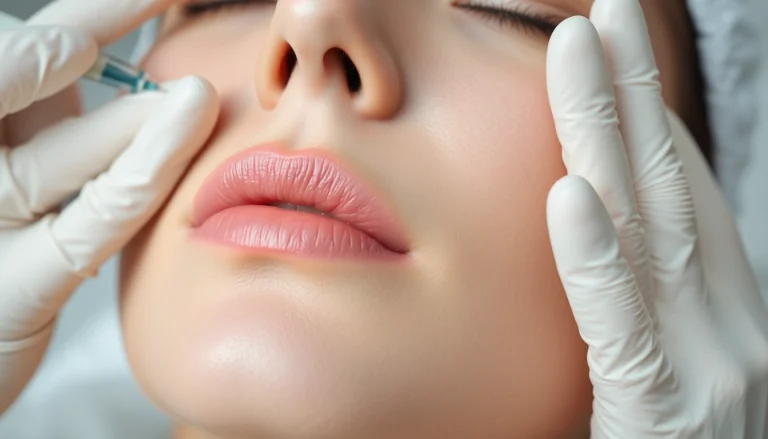
Understanding Deep Cleansing
What Is Deep Cleansing?
Deep cleansing is a skincare practice that goes beyond the surface level to remove impurities, excess oil, dead skin cells, and other debris clogging the pores. While regular cleansing is important for maintaining skin health, deep cleansing involves using specific products and techniques to ensure a more thorough purging of debris from the skin. This process is essential not only for aesthetic qualities but also for underlying skin health.
The Importance of Deep Cleansing for Your Skin
Our skin is constantly exposed to pollutants, irritants, and various environmental factors. Without regular and effective deep cleansing, these elements can accumulate, leading to issues such as acne, uneven texture, and premature aging. Deep cleansing helps in rejuvenating the skin, promoting a clearer complexion, and allowing better penetration of other skincare products. Furthermore, this practice can stimulate circulation, encouraging a healthy skin glow.
Common Myths Debunked
Despite the growing popularity of deep cleansing, several misconceptions still persist. One common myth is that deep cleansing is only necessary for those with oily skin. In reality, every skin type can benefit from this practice; dry skin can retain impurities just as much as oily skin. Another myth is that deep cleansing should cause discomfort or a tight feeling afterward, but this is misleading. Effective deep cleansing should leave the skin refreshed, not stripped or irritated.
Choosing the Right Products
Key Ingredients for Deep Cleansing
Effective deep cleansing products often contain ingredients specifically designed to penetrate deeper layers of the skin and dissolve impurities. Look for components such as salicylic acid, which is excellent for breaking down sebum in the pores, and alpha hydroxy acids (AHAs) like glycolic acid, which exfoliate the surface of the skin. Additionally, natural ingredients, like clay and charcoal, are popular for their ability to absorb toxins and excess oil, providing a thorough cleanse without harsh chemicals.
How to Select Products for Your Skin Type
Selecting products for deep cleansing should align with your specific skin type. Those with oily or acne-prone skin may benefit from gel-based cleansers with exfoliating properties, while individuals with dry or sensitive skin may prefer cream or oil-based cleansers that are more hydrating. It’s essential to check for allergens and irritants based on your previous skin reactions to ensure the product will not cause further damage.
Natural versus Synthetic Options
The debate between natural and synthetic skincare products is ongoing. Natural ingredients are often touted for their gentleness and lower likelihood of causing irritation, but they may not always be as effective in deep cleansing as certain synthetic components. Conversely, synthetic ingredients can offer targeted solutions and consistency in effectiveness. Personal preference, skin sensitivity, and specific skincare goals will ultimately guide your choice between these options.
Deep Cleansing Techniques and Methods
Step-by-Step Guide to Deep Cleansing
Deep cleansing can be implemented through a series of steps that ensure the skin is thoroughly cleansed and cared for:
- Remove Makeup: Always start by using a makeup remover or micellar water to ensure that all makeup is removed.
- Use a Cleanser: Apply a suitable deep cleanser that fits your skin type, massaging it into the skin to break down any remaining impurities.
- Exfoliate: Follow up with an exfoliating treatment that will help remove dead skin cells; do this once to twice a week depending on your skin type.
- Steam Your Face: Using steam can help to open pores, making the cleansing process more effective.
- Mask Treatment: Apply a mask suited for your skin concerns (clay, peel-off, hydrating) after cleansing to draw out impurities.
- Follow with Toner: A toner can help balance pH levels and prepare the skin for further treatment.
- Moisturize: Finish with a gentle moisturizer to hydrate the skin and seal in the benefits of your cleansing routine.
Incorporating Professional Treatments
While at-home deep cleansing is effective, incorporating professional treatments can elevate your skincare routine. Services such as facials, microdermabrasion, and chemical peels conducted by licensed estheticians can provide deeper exfoliation and more intensive cleansing. Professionals can customize treatments based on individual skin assessments, providing immediate and long-lasting results.
DIY Deep Cleansing Remedies
For those inclined toward natural remedies, several DIY options can effectively cleanse your skin at home. Simple recipes can include:
- Honey and Sugar Scrub: Combine honey’s antibacterial properties with the exfoliation of sugar for a gentle scrub.
- Oatmeal Mask: Blend oats with water to create a soothing mask that exfoliates and hydrates.
- Chamomile Rinse: Brew chamomile tea and use it as a rinsing agent for calming and cleansing benefits.
Aftercare and Maintenance
Post-Cleansing Skincare Regimen
After deep cleansing, it’s essential to adopt a skincare regimen that supports skin recovery and health. This may include applying serums rich in antioxidants, hyaluronic acid, or peptides to nourish and protect the skin. Following this with a moisturizer suitable for your skin type will help to lock in hydration and maintain your skin barrier.
Frequency of Deep Cleansing
The frequency of deep cleansing depends greatly on individual skin type and lifestyle. Generally, those with oily skin may benefit from deep cleansing 2-3 times a week, while individuals with normal or sensitive skin may stick to once a week to avoid irritation. Monitoring your skin’s response will guide you in adjusting the frequency accordingly.
Signs Your Skin Needs More Care
Being attuned to your skin’s needs is crucial. Signs that your skin may require extra attention include persistent breakouts, uneven texture, excessive oiliness, or a feeling of tightness even after cleansing. If you notice any of these signs, consider reassessing your cleansing routine or consulting a skincare professional for tailored advice.
Measuring Your Skin’s Health
Indicators of Healthy Skin Post-Cleansing
Healthy skin should appear balanced—neither too oily nor overly dry. Post-cleansing, your skin should feel comfortable, smooth, and have a visible glow without redness or irritation. If your skin meets these criteria, it signals that your deep cleansing practices are effective.
Consulting with Dermatologists
Consulting a dermatologist can offer valuable insights into your skin type and the most effective products and routines for you. Regular check-ins can help in preventing future skin issues and promote overall skin health.
Tracking Changes and Improvements
Keeping a journal of your skin’s condition can significantly aid in tracking how your skincare routine impacts your skin. Documenting changes in texture, breakouts, and oil levels helps in adjusting products and techniques as needed, creating a more tailored deep cleansing regimen over time.






